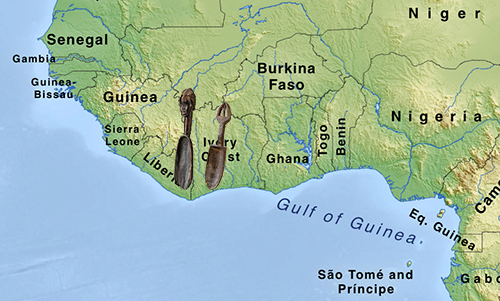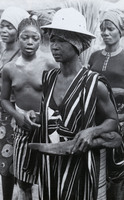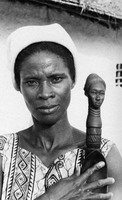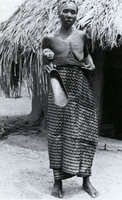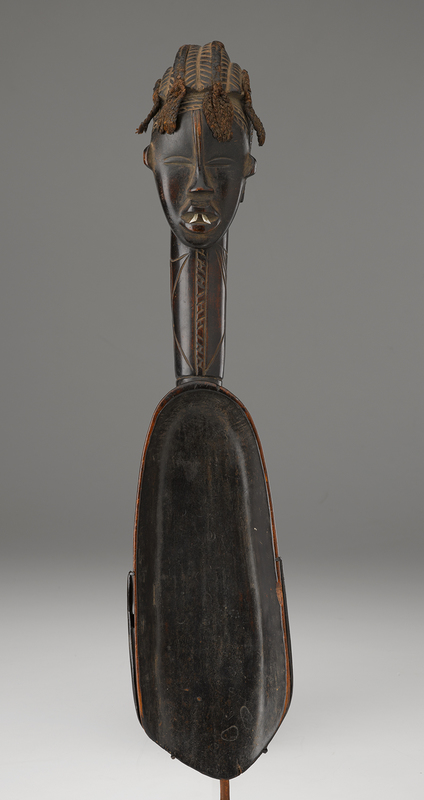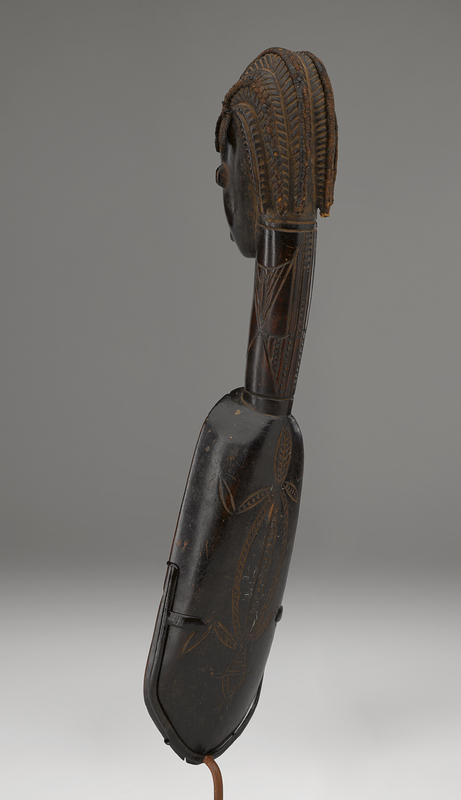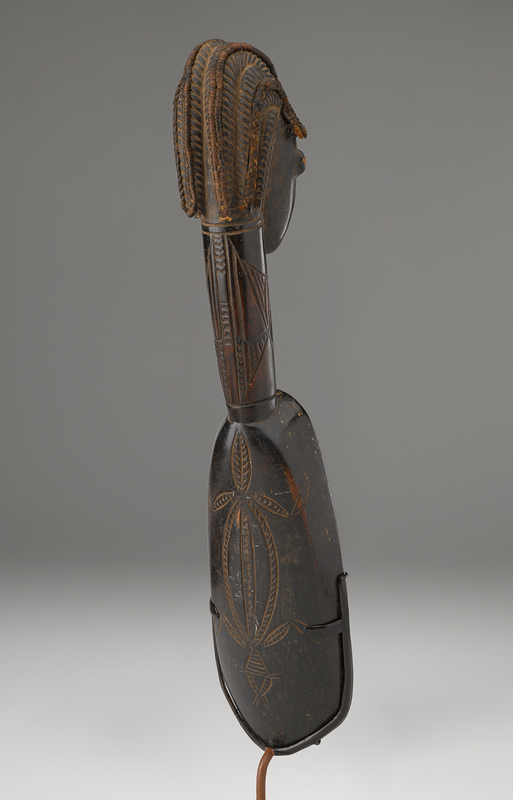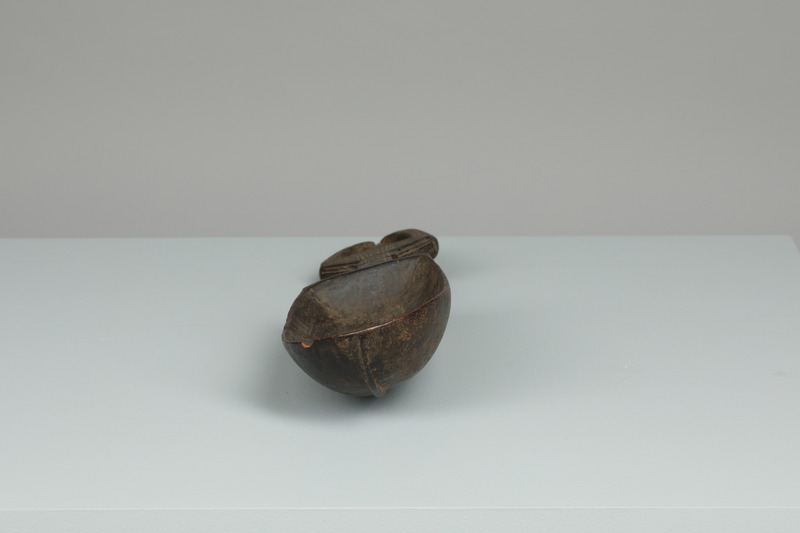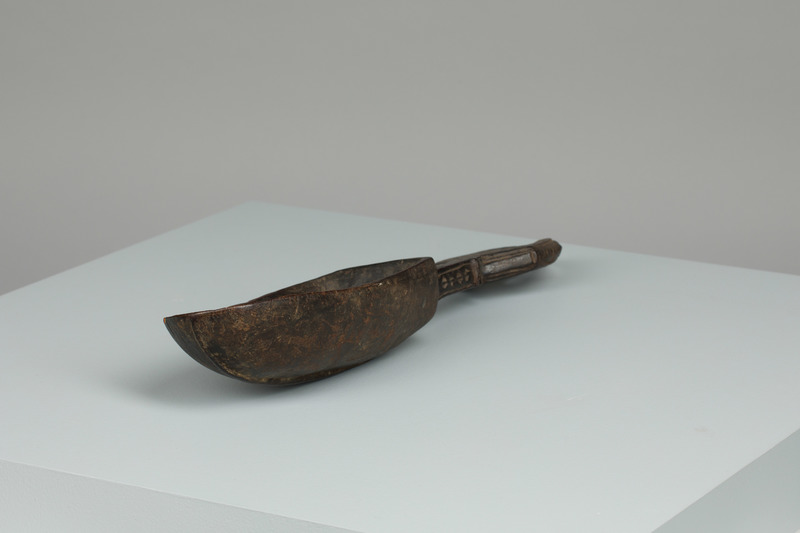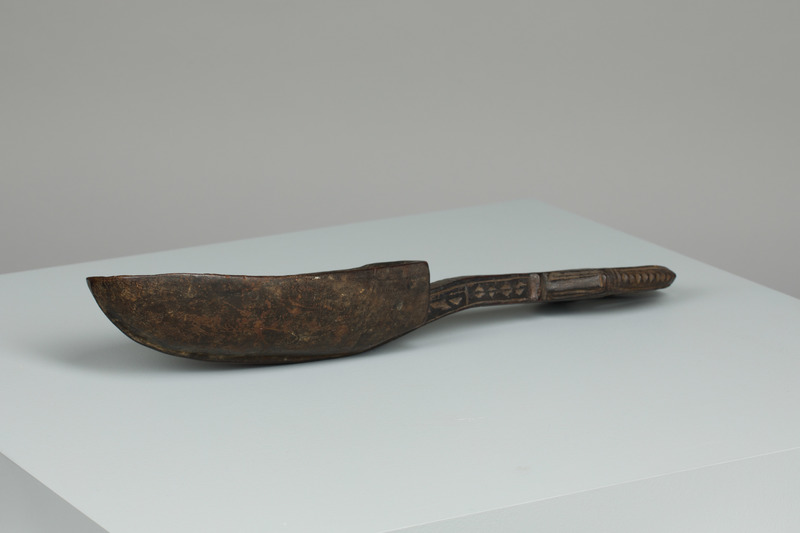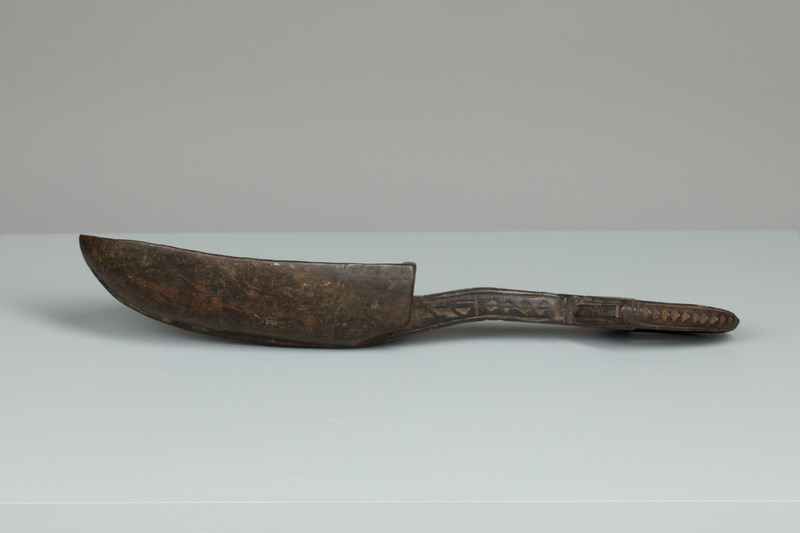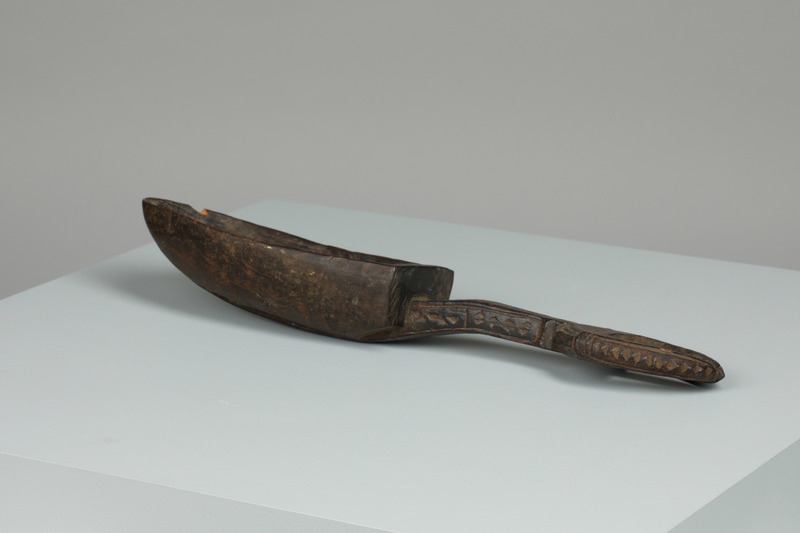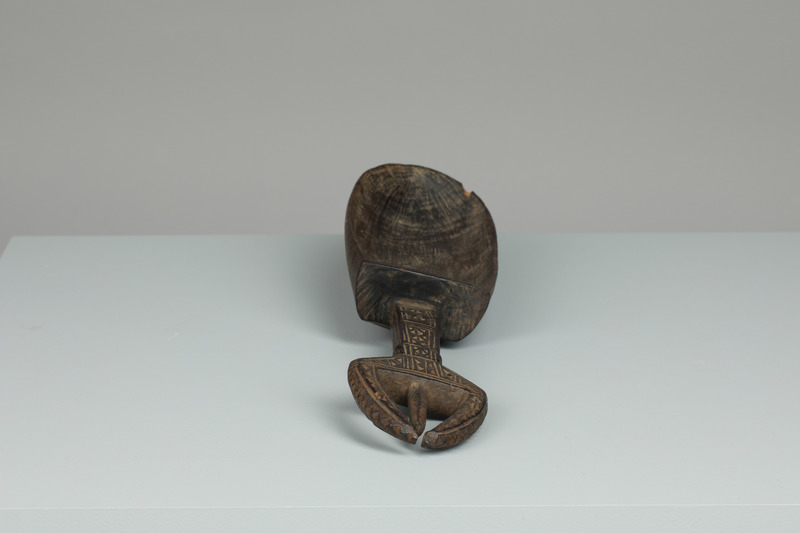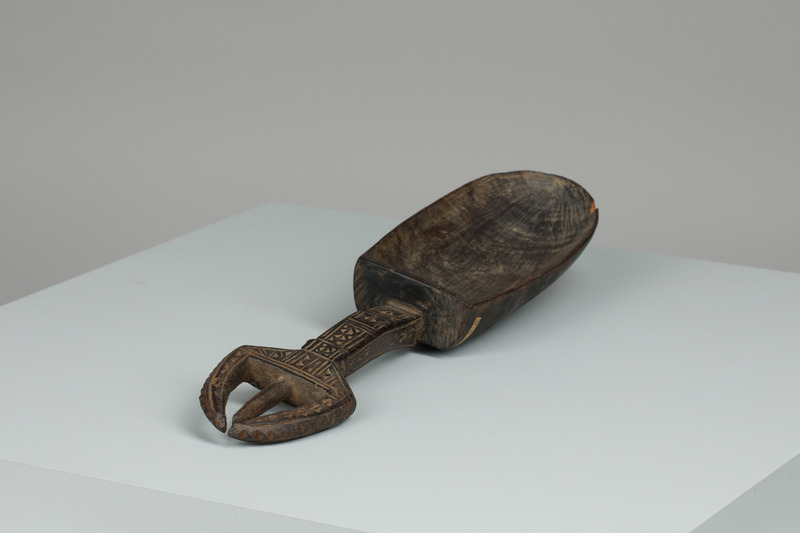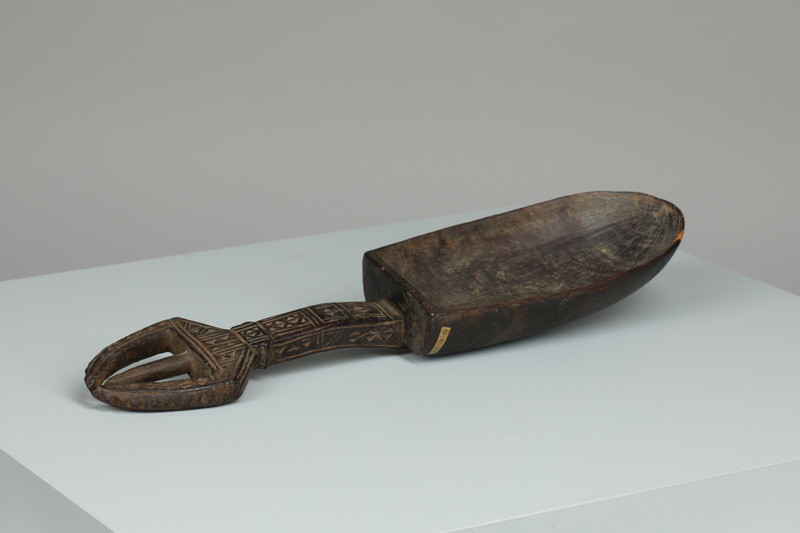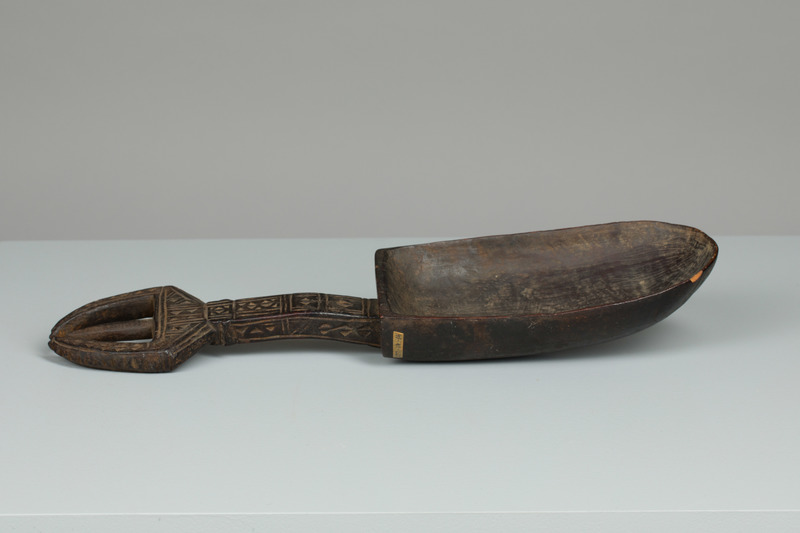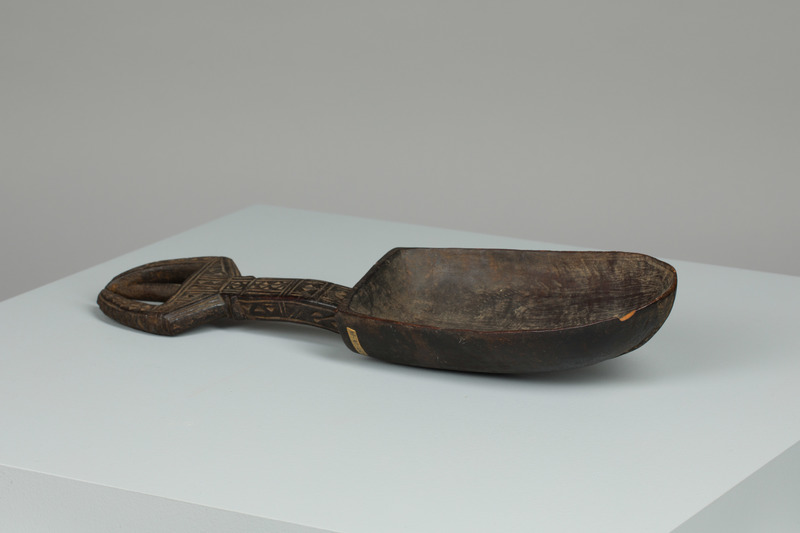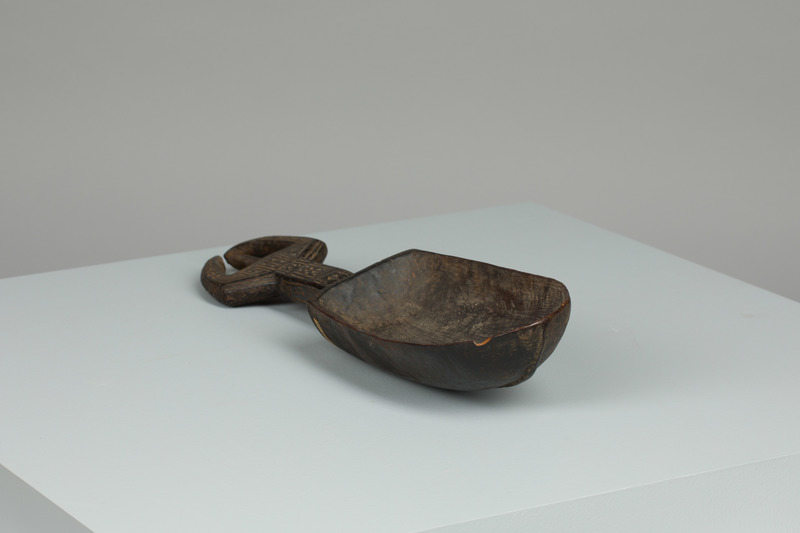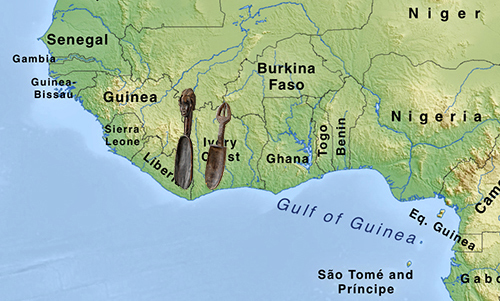Catalogue 5
Ceremonial Ladle, wake mia or wunkirmian
Dan people, Liberia and Côte d'Ivoire
20th century
Wood, metal, and plant fiber; 20 7/8 x 4 x 4 inches (53 x 10.2 x 10.2 cm)
North Carolina Museum of Art, Raleigh, Purchased with funds from The Christensen Fund and the North Carolina State Art Society (Robert F. Phifer Bequest), and Gift of Allen Clayton Davis in memory of his mother, Mildred Grace Lee Davis
Rice Spoon, ya bo sie mia
Dan people, Liberia and Côte d'Ivoire
Wood; 16 1/8 x 4 1/8 x 2 3/8 inches (41 x 10.5 x 6 cm)
Collection of Allen and Barbara Davis
Dan carvers produce a variety of functional and ceremonial objects besides masks. These include stools, ceremonial staffs and adzes and spoons, gameboards, and serving spoons that they embellish with carved figures or incise with schematic designs. A large serving spoon, ya bo sie mia, would be used to ladle rice at a family meal, and its owner would take special care with it as one of her prized possessions. If the woman uses it well and is industrious and hospitable, then she can be awarded a large elaborately carved ceremonial spoon, the wake mia or wunkirmian, the spoon associated with feasts.
The wake mia or wunkirmian is a special class of large ceremonial spoon, presented to a woman who is recognized by her neighbors for her hospitality and her outstanding work ethic. The wakede or wunkirle, “the most hospitable woman,” is industrious and an accomplished farmer. She is the woman in her household who is responsible for the administration of food resources to the entire extended family. She is distinguished by her generosity in providing food and lodging for guests, and by offering meals in her home to traveling musicians and other groups. She must prepare food for the circumcision camp and for ceremonies honoring the dead, and feed the many strangers who come to the community’s masquerade ceremonies.
The ceremonial spoon is both an emblem of honor and an object imbued with spiritual power. For a woman to able to accomplish such deeds, she needs the help of a spirit, who is said to reside in the ceremonial spoon itself. The spirit is represented by the carved head of a Dan woman with an elaborate carved coiffure to which are added fiber braids. Carefully rendered scarification is added to the face and neck of the spoon. There is an incised image of a lizard, a favorite motif of Dan carvers on the back of the spoon.
On festive occasions women from different neighborhoods, who have been given this title, compete with one another to show their generosity. They carry their spoons through the town as they dance and scatter raw rice, peanuts, wrapped candy, and coins. Each woman is accompanied by her supporters, who sing her praises. When a woman is too old to perform her duties, she chooses her own successor. She may pass on the ceremonial ladle as well as the title to the younger woman, or she may choose to keep the ladle.
Allen Davis acquired this ceremonial spoon from the collection of George Harley, who was then living in Virginia.
MJA
References
Adams, Monni.1978. “The Great Scoop: Carved Food Ladle.” In Masterpieces of the Peabody Museum, Harvard University, 7–8. Cambridge, MA: Peabody Museum of Archaeology and Ethnology.
Fischer, Eberhard, and Hans Himmelheber. 1984. The Arts of the Dan in West Africa. Zurich: Museum Rietberg.
———. “Spoons of the Dan (Liberia/Ivory Coast).” 1991. In Spoons in African Art: Cooking—Serving—Eating; Emblems of Abundance, edited by Lorenz Homberger, 28–40. Zurich: Museum Rietberg.
Siegmann, William. “Ladle.” 1981. In For Spirits and Kings: African Art from the Paul and Ruth Tishman Collection, edited by Susan Vogel, 70–71. New York: Metropolitan Museum of Art.



